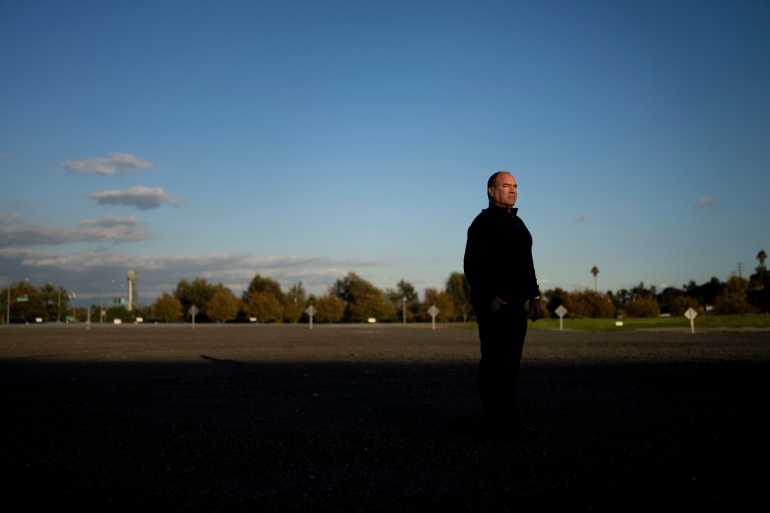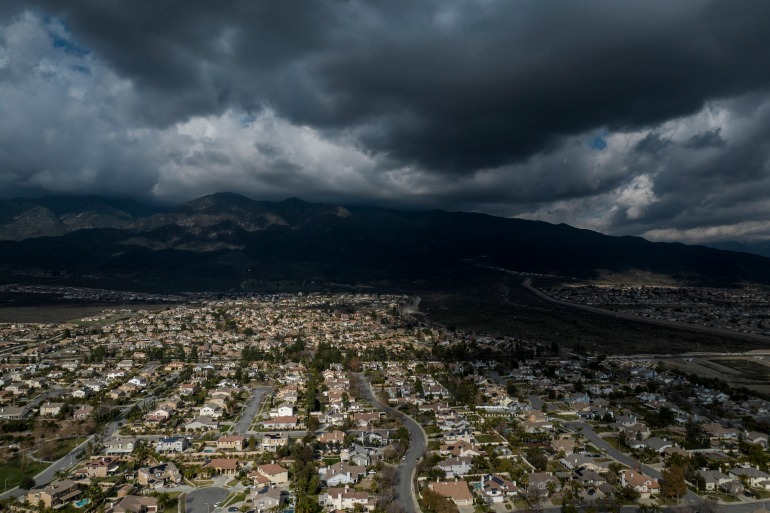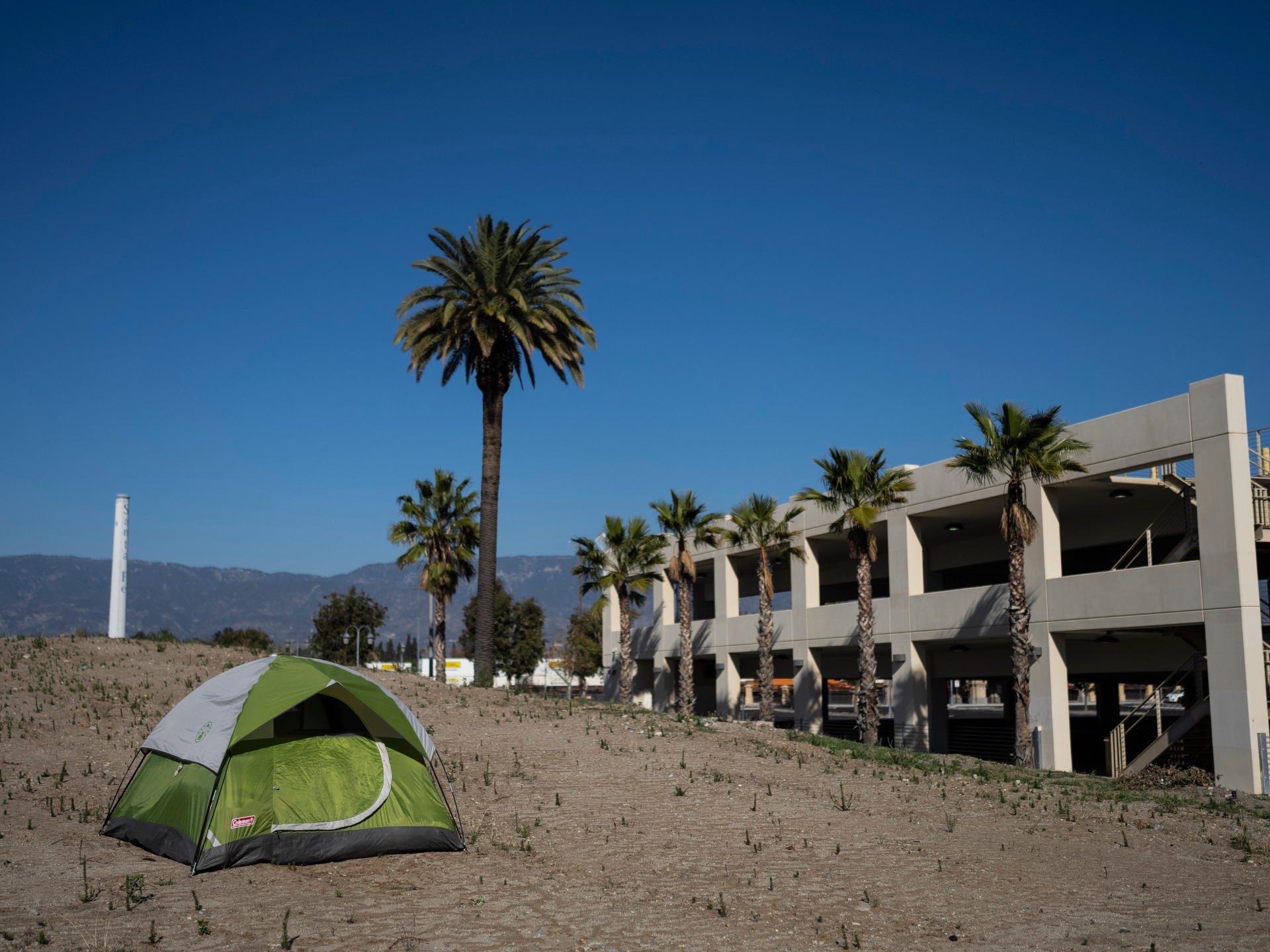The November midterm elections in the United States saw Californians continue to embrace progressive leadership, but voters in one of the state’s most populous counties are so frustrated with this political direction that they voted to consider seceding and forming their own state.
An advisory ballot proposal approved in San Bernardino County – home to 2.2 million people – directs local officials to study the possibility of secession. The razor-thin margin of victory is the latest sign of political unrest and economic distress in California.
This attempt to create a new state – which would be the first since Hawaii joined the union in 1959 – is a long-shot proposition for the county just east of Los Angeles that has suffered from sharp increases in the cost of living.
It would hinge on approval by the California Legislature and Congress, both of which are highly unlikely.
Still, it is significant that the vote came from a racially and ethnically diverse county that is politically mixed, as well as the fifth-most populous in the state and the largest in the nation by area. San Bernardino’s 51,800sq km (20,000sq miles) is composed of more land than nine states.
The votes speak to the alienation that some voters feel from a statehouse long dominated by Democrats who have made little progress on the growing homeless crisis, soaring housing costs and rising crime rates, while residents pay among the highest taxes in the country.
There is “a lot of frustration overall” with state government and how public dollars are spent, said Curt Hagman, chairman of the San Bernardino County Board of Supervisors, which placed the proposal on the ballot.
The county will look at whether billions of dollars in state and federal funds were fairly shared with local governments in the densely populated area of southern California known as the “Inland Empire”, which includes Los Angeles County and San Bernandino County.
From record inflation to friction over the state’s long-running COVID-19 pandemic policies, “it’s been a rough few years” for residents, Hagman said.
Kristin Washington, chair of the San Bernardino County Democratic Party, dismissed the measure as a political manoeuvre to turn out conservative voters rather than a barometer of public sentiment.
“Putting it on a ballot was a waste of time for the voters,” she said. “The option of actually seceding from the state is not even something that is realistic because of all the steps that actually go into it.”
In San Bernardino County, Democratic voters now outnumber Republicans by 12 points. Still, in November, Democratic Governor Gavin Newsom lost in the county by five points.
He easily defeated a recall last year driven by opposition to pandemic health orders that shuttered schools and businesses. California was among the first states to close schools and turn to online learning, and also among the last for students to return to in-person learning.

Democrats dominate the California Legislature and congressional delegation, and the state is known as an incubator of liberal policy on climate, healthcare, labour issues and immigration.
Once solidly Republican terrain, San Bernardino County has become more diverse and Democratic with recent population growth, much like San Diego and Orange counties.
Throughout its 172-year history, California has weathered more than 220 failed attempts to dismantle the state into as many as six smaller states, according to the California State Library. Earlier breakaway efforts sought to carve out a new “State of Jefferson” from nearly two dozen Northern California counties, though they were largely rural, conservative-leaning and sparsely populated.
Competition between mining and agricultural interests, as well as opposition to taxation, have driven some of these secession efforts. There have been proposals to divide the sprawling state into north and south sections, as well as splitting it lengthwise to create separate coastal and inland regions.
“Everybody outside this county thinks we are the wild, wild West,” said Ontario Mayor Paul Leon, whose city is one of the largest in San Bernandino county. Despite the county’s size, it “gets a pittance” when it comes to state and federal aid for roads, courthouses and transit, said Leon, who backed the secession measure.
Since the proposal passed, the county’s next step is to form a committee – likely composed of public and private sector members – to conduct a funding analysis that will compare San Bernardino with other counties.
The city of San Bernardino, with a population of about 220,000, anchors the third-largest metropolitan area in the state, behind Los Angeles and San Francisco. Beyond the urban centres, its communities range from placid suburbs, mountain towns and isolated desert havens, such as Joshua Tree.
Before the pandemic, the county’s unemployment rate was already 9.5 percent in 2019, with 12.2 percent of households living below the poverty line.

Many Inland Empire communities are struggling financially even though California’s economy – by itself – may soon become the fourth largest in the world, up from fifth. The state announced last month that it had recovered all of the 2.7 million jobs it lost during the pandemic.
However, there are projections for a $25bn budget deficit next year and signs of an unsteady economy, as even the historically powerful tech industry has seen layoffs.
From 2018 to 2021, 352 companies moved their headquarters from California to other states, according to a Hoover Institution study. After decades of growth, the state population of 39 million has been shrinking, partly because residents are leaving for states that offer more affordable housing and lower taxes.
Because of decreased population, the state is even losing a congressional seat in 2023, dropping from 53 to 52. This has all fuelled a reckoning with the direction of the state, which has long been mythologised as a land of opportunity.
“A lot of Californians are unhappy in many ways,” said Claremont McKenna College political scientist Jack Pitney, citing record gas prices, the rising cost of living and real estate prices that make homeownership unattainable for many working-class families.
“The vote on secession was like smashing the china. It’s a way of getting attention, but in the end, it doesn’t accomplish much,” Pitney said.
Even Hagman said he doesn’t want to see his home state broken apart, though he sees the approval of the measure as an important statement on frustration with state lawmakers in the capital Sacramento.
“I want to remain part of California right now,” he said. “I’m proud to be a Californian.”
Sumber: www.aljazeera.com
 Skip to content
Skip to content


